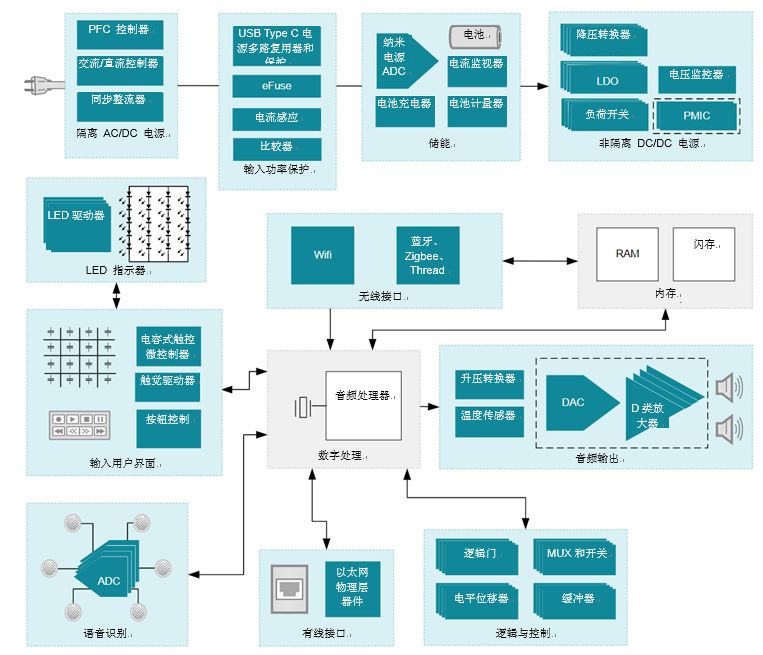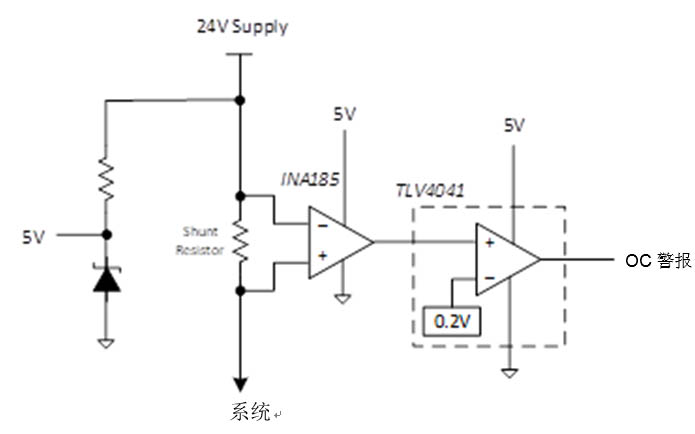Smart audio circuit board factory continues to improve our life experience through cutting-edge artificial intelligence speech recognition technology and high sound quality. When used in conjunction with other home automation equipment (such as video doorbells, lighting systems, thermostats and security systems), smart speakers and smart displays will quickly become the control centers of smart home networks.
In order to keep up with the ever-increasing market demand and maintain a leading position, designers not only need to add features and improve performance to smart speakers, but also need to reduce their size and improve heat dissipation capabilities. How to make semiconductor devices achieve higher performance in smaller packages is critical to reducing the size of the circuit board in space-constrained applications.
Most of the circuit boards integrate key components that directly affect the user experience, such as an on-chip audio system, a capacitive touch human-machine interface controller with haptic feedback, an LED driver engine and a class-D audio amplifier. Other components in the smart speaker system (such as power management) will not directly affect the user experience, but will affect the size and cost. Circuit board factory designers can continue to improve their performance while reducing the size of these components.
The input power protection circuit shown in Figure 1 is such a component. Although input protection is sometimes taken for granted in many devices, it is a key circuit in smart speakers that can prevent damage to the entire system when it is powered on or connected to an unreliable power supply. The smart speaker is powered by an external AC/DC wall adapter or an internal switching power supply. This circuit can protect any downstream devices from damage when malfunctions are caused by events such as abnormal high voltage or current.

Figure 1: Reference block diagram for implementing typical functions of smart speakers
eFuse devices can usually achieve over-current protection (OCP) and over-voltage protection (OVP). It uses integrated MOSFETs (power metal oxide semiconductor field effect transistors) to disconnect all downstream circuits when these faults occur. eFuse devices can also manage inrush current during startup, ensuring that the system voltage is increased in a controlled manner. Devices such as TPS2595 are packaged in 2mm*2mm, which can provide protection up to 18V/4A.
For over-current protection (OCP), a common discrete implementation involves the use of a current-sense amplifier, such as INA185, whose role is to measure the current across the shunt resistor. The output of the INA185 is either fed into an analog-to-digital converter (ADC) to digitize the measured value, or fed into a comparator to provide an instant alarm to the microcontroller. The ADC path can accurately measure the current in the system, but due to the sampling frequency of the ADC, it will increase the delay in reading the measurement. The speed of the comparator path is about 1000 times faster than that of the ADC, and it consumes less power, but it only provides a digital output signal to indicate that overcurrent has occurred, rather than the actual current value.
ADC is suitable for systems that need to accurately measure current, and can flexibly change the limit dynamically. The INA185 has a full-scale accuracy better than ±0.2%. It is currently the industry's smallest current sense amplifier with a leaded package, with a size of only 1.6mm*1.6mm, which is very suitable for miniaturized systems that need to optimize the layout of the circuit board.
However, in smart displays, the system voltage is higher than 18V, so faster overcurrent protection (OCP) alarms are required. The integrated eFuse device may not be able to operate in such a system, but the combination of a current sense amplifier and a comparator can provide the same function while increasing flexibility and taking up minimal board space. The nanosecond delay comparator such as TLV4041 consumes only 2μA of power supply current and can be powered by a simple Zener diode. The combined solution size of INA185 and TLV4041 is 5mm2, and the response speed is 50 times faster than other similar devices.
When the system current exceeds a custom threshold, the use of amplifiers such as INA185 with a fast comparator can provide fast and accurate overcurrent protection (OCP) alarms. Depending on the system, this limit can be set from a few milliamperes to a few amperes. The TLV4041 also integrates a high-precision (1% accuracy over the entire temperature range of -40°C to +125°C) voltage reference, which provides accurate alarms regardless of the current level, all at 0.73mm* Realized in 0.73mm space.
The discrete solution shown in Figure 2 does not require an additional on-board voltage regulator, thus saving board space. It is suitable for low-voltage and high-voltage smart speaker systems, and can also be used for different speaker models with different power supply voltage levels to further simplify Input power protection design.

After incorporating the necessary passive components, the combined solution of INA185 (2.56mm2) and TLV4041 (0.533mm2) occupies approximately 5mm2 of board space. The overall size of the solution is 15% smaller than similar integrated devices that provide current sensing. In addition, the delay of TLV4041 is only 450ns, which makes the combined solution much faster than a solution that integrates a universal comparator and a current sense amplifier.